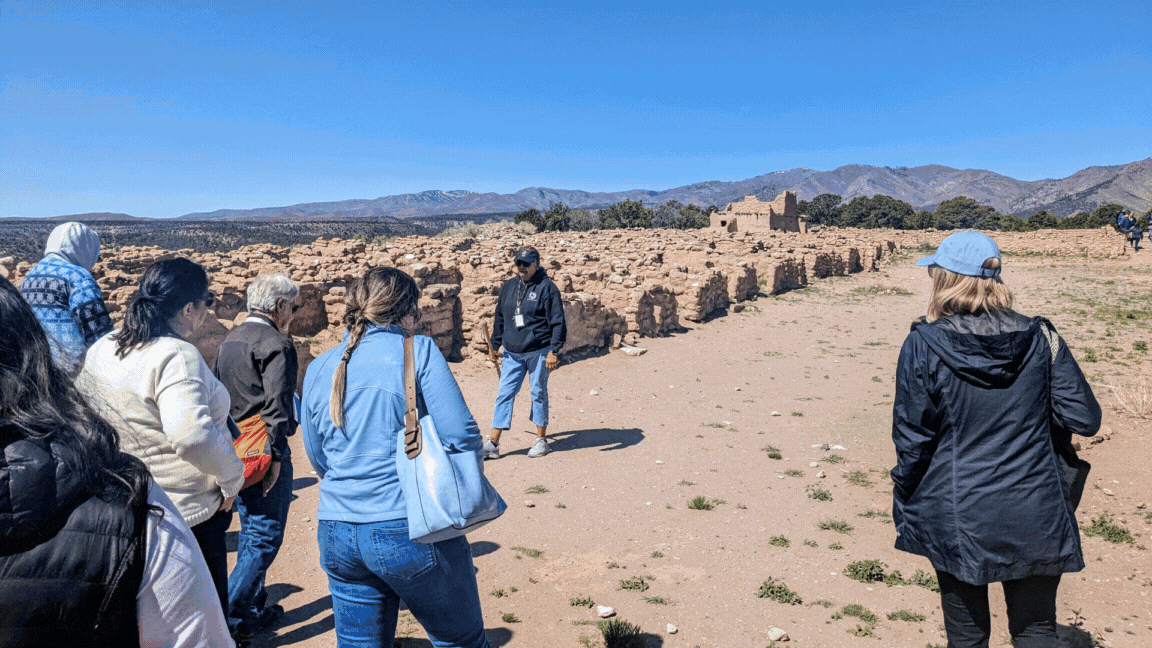The U.S. Department of Energy Office of Environmental Management's (EM) longest established working group — the State and Tribal Government Working Group (STGWG) — drew the largest number of participants ever for its spring meeting, with nearly double the usual attendance.
Office of Environmental Management
May 21, 2024
SANTA FE, N.M. — The U.S. Department of Energy Office of Environmental Management's (EM) longest established working group — the State and Tribal Government Working Group (STGWG) — drew the largest number of participants ever for its spring meeting, with nearly double the usual attendance. With a focus on the nearby Los Alamos National Laboratory (LANL) and EM’s legacy cleanup work there, the meeting also featured a half-day dialogue on tribal sacred sites and cultural resource management plans, including EM’s recent review of plans across the EM complex. The Santa Clara Pueblo at Puye Cliffs, home to 1,500 Pueblo Indians who had farmed, hunted and lived there for centuries, hosted the meeting participants. Raymond Martinez, lieutenant governor of the Pueblo de San Ildefonso, shared some of that history during a LANL tour the group attended. “Our people still hunt and use this area as they have for hundreds of years,” Martinez said. EM Principal Deputy Assistant Secretary Jeff Avery attended the events and said, “Spending time with Governors Moquino and Chavarria (of Pueblo de San Ildefonso and Santa Clara Pueblo, respectively) opened my eyes to some of the challenges their communities face.” EM Tribal Affairs Advisor Jill Conrad added, “Great dialogue is an indication of a great meeting. There’s no replacement for in-person conversations.” In addition to attending STGWG meetings, Avery also traveled to the Pueblo de Cochiti, Pueblo of Jemez and Santa Clara Pueblo to deepen his understanding of cultural values and priorities as well as the impacts of the presence of United States federal entities near these communities.
-Contributor: Jill Conrad
To receive the latest news and updates about the Office of Environmental Management, submit your e-mail address.

